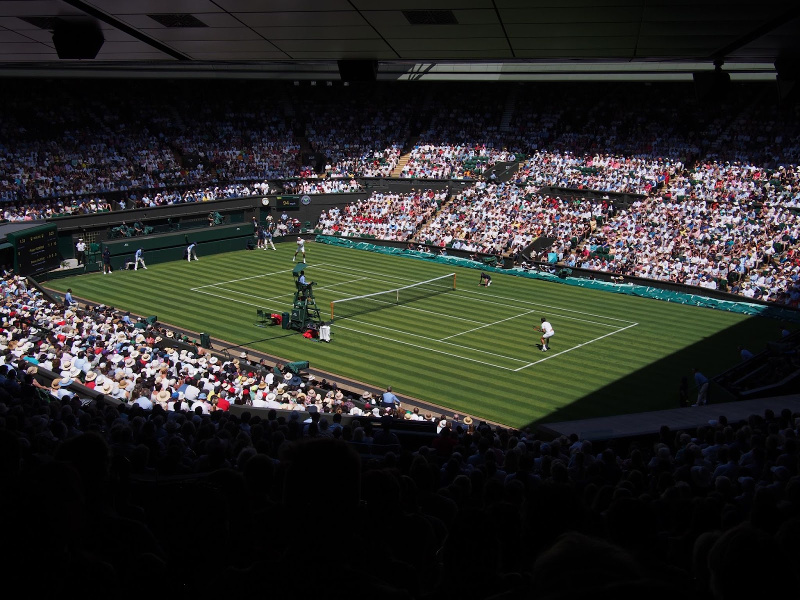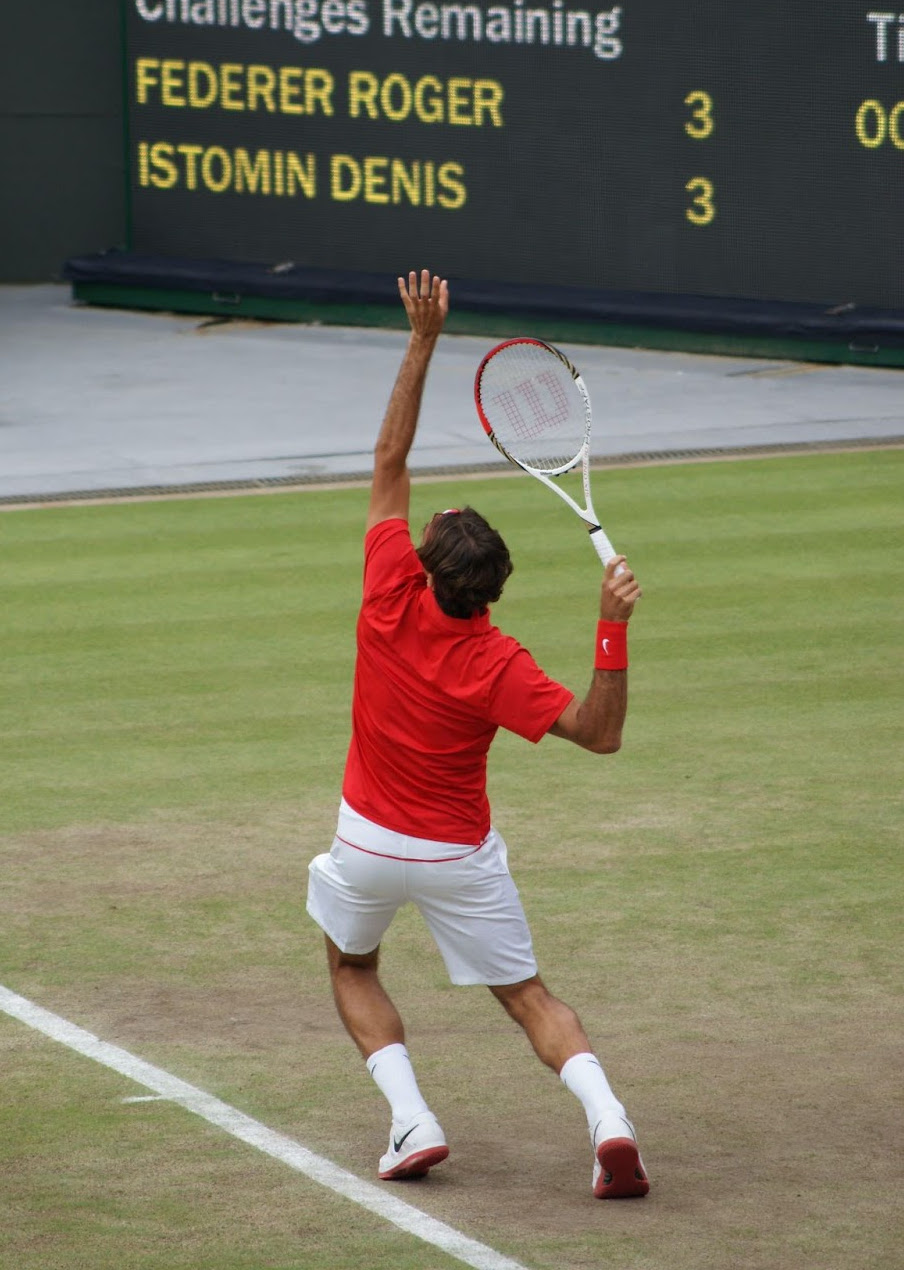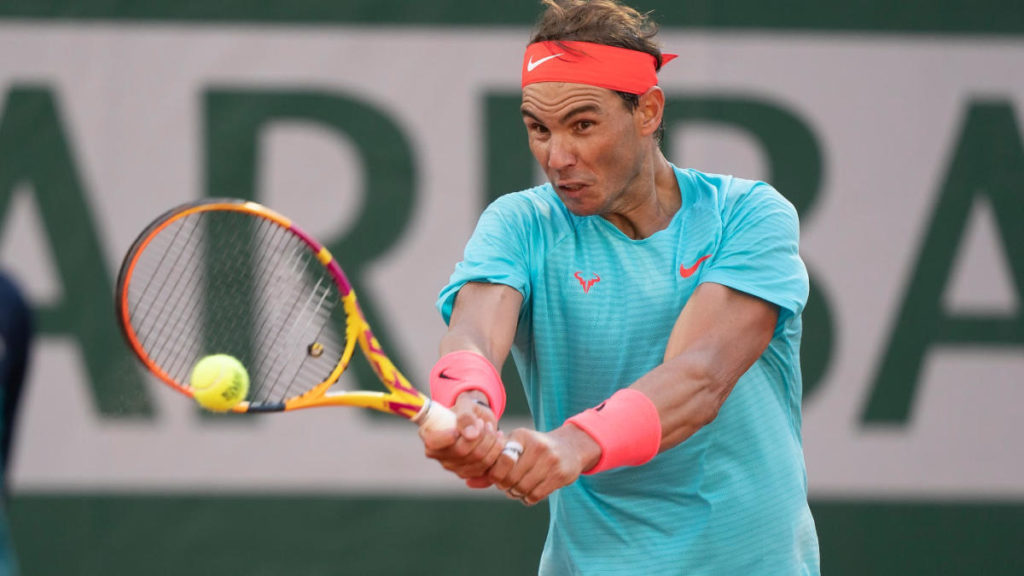Federer and Nadal – a technical analysis
In this blog article, we will break down the differences in technique from a technical standpoint between two of the greatest players in tennis history, Roger Federer and Rafael Nadal. Both have had incredibly successful and distinguished careers to date, with 41 Grand Slam Men’s singles titles between them following Nadal’s recent Australian Open victory.

Federer has god given ability, his exceptional coordination and judgement of the ball is something that cannot be coached. It has of course been refined through hours and hours spent on the practice court, but to reach his level, you have to be gifted. Alternatively, Nadal’s playing style largely revolves around powerful groundstrokes hit with plenty of speed and topspin, making him an awkward customer even for other members of the sport’s elite. Let’s take a look at both of their respective games in a little more detail.
Serve
Federer’s serve is incredibly difficult to read from an opponent’s standpoint, as he practically has the same toss regardless of what type of serve he is executing. The rocking motion in his toss action is what makes his serve distinctive, allows a perfect angle of release for the ball and is performed identically time after time. He utilises a platform stance in his serve action, which is where the feet are kept shoulder width apart for the beginning of the service action and for the loading phase (when the knees are bent).

This stance also helps Federer with the consistency of his serve whilst still aiding him with great power delivery. He typically achieves speeds of 120-125 mph (5) of first serves, whilst his second serves are in the 90-95 mph range.
Alternatively, Nadal has demonstrated a high-risk high-reward style in recent times when it comes to serving. From a technical standpoint, this translates to him using a higher and exaggerated take back motion, greater lift and more weight transfer between his front and back legs. This higher take back increases the distance that the racket is travelling, allowing him to gain more momentum and add more speed to his serve.
He is serving at roughly 115 mph (2) and 102 mph on second serves, winning an average of 79% of first serve points. However, he committed 11 (2) double faults in his Australian Open quarter-final match against Denis Shapovalov, the most ever in his ATP Tour career to date demonstrating his high-risk high-reward style.
Groundstrokes
Nadal’s forehand groundstroke is one of the most feared shots in tennis and is also up there as one of the most unconventional. To execute this shot, Nadal uses a grip referred to in tennis as the ‘semi-western grip’, and turns his feet and hips perpendicular to where the shot is intended to go. This enables him to make a full unit turn utilising all of the leverage in his upper and lower body to generate the maximum amount of power possible. Nadal drives through his legs from a low to high position as he turns, with his racket performing a similar motion, to generate immense amounts of topspin as he scrapes across the top of the ball. This is what gives Nadal’s forehand its ferocious feel, forcing his opponents to counter with a more defensive shot enabling Nadal to seize control of the rally.
In contrast to Nadal’s, the forehand technique used by Federer is much more conventional looking and is what many in the sport would refer to as ‘perfect technique’. It is one area of his game in which he demonstrates his exceptional technical prowess as he relies much more on timing and precision to play his forehand groundstroke rather than the aggressive style adopted by his Spanish counterpart. Federer gives himself as much room as he can to play this shot, ensuring that his arm is almost fully extended upon impact with the ball. His head remains still with his eyes fixed upon his racket as it makes contact. If he was to move his head he would lose his precision, thus shanking and mistiming his forehand strokes.
Federer’s backhand is perhaps the most underrated shot he has in his arsenal as he makes it look so effortless. Unlike most others, Federer possesses the ability to consistently play single-handed backhand shots to both set up opportunities to utilise his forehand as well as hitting backhand winners.

Nadal on the other hand, uses both his left (stronger) hand, in continental grip, and his right hand, in semi-western grip, to perform his backhand shots. It is evident, when watching this shot, how Nadal transfers his bodyweight from his back foot to his front foot to generate as much power and topspin as possible.
Shot Success
When analysing the shot success statistics of these two sporting icons one thing becomes clear, they are exceptionally well rounded athletes with virtually no weaknesses in terms of shots. Nadal averages a 1st serve success rate of 68%,(9) the second highest out of all currently active players. Federer is currently slightly lower down the list averaging 62%, however he does average more 1st serve points won with 77%(9) compared to Nadal’s 72%. 7% of Federer’s groundstrokes, forehand and backhand combined are winners (8), which is slightly higher than Nadal’s groundstroke winner average of 5%. The latter being roughly the average seen among professional players.
Conclusion
Roger Federer and Rafa Nadal, along with Novak Djokovic, have dominated the Grand Slam tennis scene over the last 15-20 years, winning 61 out of the last 76 Grand Slam tournaments. Hopefully this article has helped you understand the technical aspects of their games that make them so superior, and how their shot techniques differentiate.
References
- https://thetennisbros.com/tennis-tips/serve/roger-federer-serve-analysis/
- https://www.atptour.com/en/news/nadal-australian-open-2022-serve-feature
- https://www.essentialtennis.com/roger-federer-groundstroke-practice-full-speed/
- http://tennisinstruction.com/rafael-nadal-backhand-technique/
- http://tennisinstruction.com/roger-federer-analysis-a-comprehensive-federer-analysis/
- http://www.tennisabstract.com/blog/category/shot-by-shot-stats/
- https://www.atptour.com/en/players/atp-head-2-head/rafael-nadal-vs-roger-federer/N409/F324
- http://www.tennisabstract.com/charting/RogerFederer.html
- https://www.atptour.com/en/news/nadal-infosys-insights-serve-return-september-2020
- https://tennishead.net/statistical-analysis-federer-nadal-and-djokovic-are-the-best-all-rounders/